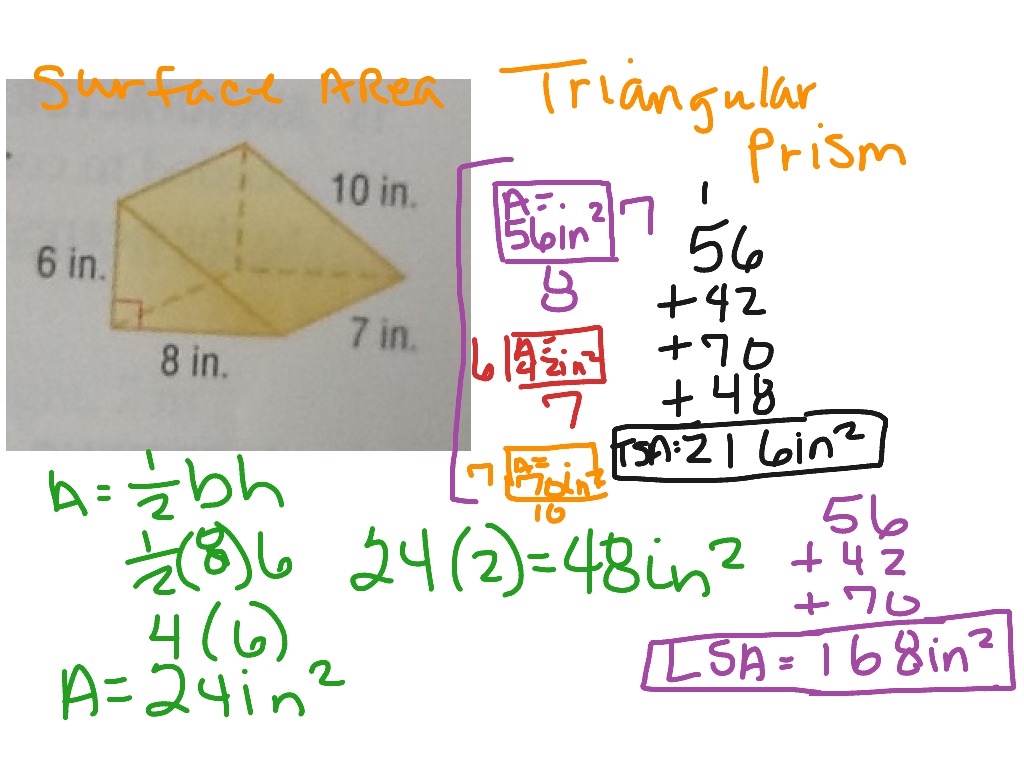

Their studies on triangles, parallelograms, and three-dimensional shapes have greatly influenced contemporary understanding of geometry and the surface area of various shapes, including triangular prisms. Triangular Prism calculator and formulas. While there is no definitive historical account of the origin of the triangular prism or its surface area concept, it can be traced back to ancient Greece, where mathematicians like Euclid and Pythagoras laid the groundwork for modern geometry. Step 3: Finally, the surface area and the volume of the triangular prism. Moreover, artists and designers frequently employ triangular prisms in their creations, making the knowledge of surface area invaluable for conceptualizing and executing their work. You can check out the volume, total surface area, lateral surface area, top, and base surface area formulas on this page. One method of calculating the TSA (Total Surface Area) is to unfold a 3D shape, into its flat 2D net which the shape is made from.
#TRIANGULAR PRISM SURFACE AREA FORMULA CALCULATOR HOW TO#
There are Surface area of a triangular prism: The surface area of a. Answer The Formulas of Triangular Prism Get the useful formulas of a triangular prism in the following sections. In this lesson we show how to calculate the Total Surface Area of Rectangular and Triangular Prisms, including Cylinders, as well as the TSA of Pyramids. In packaging design, calculating the surface area of a triangular prism helps optimize material usage, reduce waste, and minimize costs. Instead, a calculator can be used to The surface area of a frustum is given by.

For instance, in construction and architecture, the surface area plays a role in determining the stability and strength of structures, as well as insulation and energy efficiency.

Triangular prisms, like other three-dimensional shapes, have numerous real-life applications that make understanding their surface area essential. The concept of surface area has broad applications in various fields, including engineering, architecture, and design, where it is crucial to estimate material requirements, costs, and structural integrity. A triangular prism consists of two congruent triangles at the ends, known as bases, connected by three parallelogram-shaped lateral faces. The surface area of a triangular prism is a key concept in geometry that pertains to the total area covering the external faces of the three-dimensional shape.


 0 kommentar(er)
0 kommentar(er)
